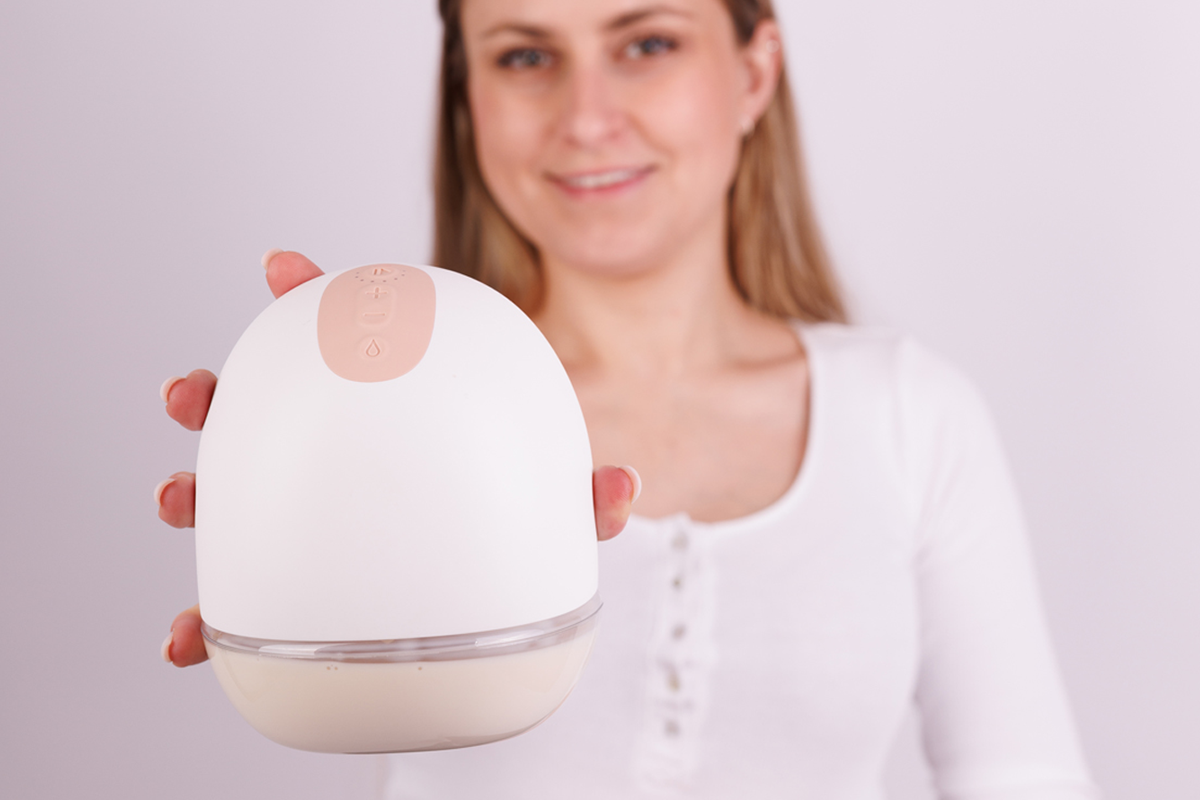Are you a new mom weighing your options between a hands-free breast pump vs regular? The world of breast pumps can be overwhelming, but we've got you covered! Whether you're looking to power pump or just need occasional expression, choosing between a wireless wearable breast pump vs a traditional breast pump is a big decision. We'll break down the pros and cons, helping you figure out which option fits your lifestyle best. And here's a pro tip: don't forget to look into getting a breast pump through insurance! If you're after convenience and performance, check out the Perifit wearable breast pump.
What is a regular breast pump?
Traditional pumping power
Traditional breast pumps typically consist of a motor unit, tubing, and flanges that attach to the breasts. Using a regular breast pump often involves getting partially undressed, plugging the pump into a wall outlet, and remaining seated or stationary during the pumping session. The process can be uncomfortable or even painful for some women due to the strong suction and rigid flanges. However, regular breast pumps are generally more affordable and widely available through insurance coverage compared to newer wearable options.
One of the key benefits of a regular breast pump vs a wearable breast pump is its proven track record of efficiency. Many models offer hospital-grade suction strength, which can be crucial for establishing and maintaining milk supply. This makes them ideal for moms who need to pump frequently or are dealing with supply issues.
Considerations for regular pumps
While regular pumps pack a punch in terms of suction power, they do have some drawbacks compared to hands-free breast pump options. The need to be plugged in or have charged batteries can limit mobility. Additionally, the setup process and cleaning multiple parts after each use can be time-consuming.
For moms looking to multitask or pump discreetly, a regular pump may not be the most convenient option. However, many insurance plans cover the cost of a standard electric breast pump, making it an accessible choice for many families. When choosing between a wearable breast pump or a regular breast pump, consider your lifestyle, pumping frequency, and personal preferences to find the best fit for your breastfeeding journey.
What is a wearable breast pump?
A hands-free pumping revolution
Wearable breast pumps are innovative devices designed to offer moms unprecedented freedom and flexibility while expressing milk. Unlike traditional breast pumps that tether you to an outlet, wearable pumps fit discreetly inside your bra, allowing you to pump on the go. These compact, wireless marvels enable multitasking during pumping sessions, whether you're working, doing chores, or simply relaxing. Learning how to use a wearable breast pump is straightforward, the key is to position it correctly to ensure comfort and efficiency.
Benefits that make a difference
The advantages of wearable breast pumps are game-changing for busy moms. Their mobility and discretion allow you to pump virtually anywhere without drawing attention. Many models, like the Perifit wearable breast pump, offer hospital-grade suction power up to 300mmHg, ensuring efficient milk expression. Smart features, such as app connectivity for tracking milk output, add another layer of convenience. The hands-free design means you can finally answer that email or enjoy your coffee while pumping.
Considerations to keep in mind
While wearable pumps offer numerous benefits, they're not without drawbacks. The convenience comes at a higher price point compared to traditional pumps, and insurance coverage may be limited. Battery life is another factor to consider – you'll need to remember to charge your pump regularly. However, for many moms, the freedom and flexibility of a wearable breast pump make it a worthwhile investment in their breastfeeding journey.
Key differences between wearable and regular breast pumps
• Mobility and convenience: Wearable pumps offer freedom and discretion, tucking into a bra for discreet pumping. The hands-free nature of wearable pumps allows for multitasking, making them ideal for busy parents. The Perifit wearable breast pump exemplifies this hands-free convenience, fitting comfortably in your bra for discreet pumping anywhere.
• Price and insurance coverage: wearable pumps tend to cost more. Many insurance plans cover traditional pumps, making them more affordable. Consider budget and coverage.
• Maintenance and durability: Wearable pumps have fewer parts, making them easier to clean. Components are often dishwasher-safe. The Perifit pump uses BPA-free, food-safe materials for both safety and durability.
💡 When deciding between a wearable breast pump vs electric breast pump, consider your lifestyle and pumping goals. For working mothers who need to pump while on the go, wearable breast pumps offer enhanced mobility and discretion, making them an excellent choice.
Are wearable breast pumps as effective as regular ones?
When comparing a wearable breast pump vs regular electric breast pump, effectiveness is a key concern for many parents. While wearable pumps offer unparalleled convenience, their efficiency can vary.
Wearable breast pumps generally have slightly lower suction strength compared to traditional electric pumps. This is due to their compact and portable design, which prioritizes mobility and discretion over raw pumping power. The suction mechanism in wearable pumps is typically smaller and less robust than their larger, stationary counterparts.
However, the Perifit wearable breast pump stands out by incorporating hospital-grade suction up to 300mmHg, comparable to many regular electric pumps. This powerful suction, combined with customizable rhythms that mimic a baby's natural sucking patterns, helps optimize milk expression and maintain an adequate milk supply for nursing mothers. Plus, Perifit's customizable rhythms help optimize each session.
Are wearable breast pumps covered by insurance?
When it comes to getting a wearable breast pump or a regular through insurance, coverage can vary significantly. Many insurance plans do cover breast pumps as part of the Affordable Care Act, but wearable breast pumps are often considered an "upgrade" and may require an out-of-pocket cost. It's essential to check with your specific insurance provider to understand what's covered.
To get a breast pump through your health insurance, start by calling your provider. Ask about coverage for buying or renting a pump, any cost-sharing requirements, and if you need a prescription. Some insurers may fully cover traditional electric breast pumps.
If your insurance doesn't fully cover a wearable pump, consider combining a covered traditional pump with a separate wearable option for flexibility. Some moms find success using a standard pump for power pump sessions at home and a wearable pump like Perifit for convenience when out. The goal is to find a solution that works best for your unique situation and breastfeeding journey.
So, which is better: a hands-free wearable breast pump vs regular? The answer depends on your lifestyle and needs. Wearable breast pumps like Perifit offer unmatched convenience and discretion, perfect for busy moms on-the-go. Traditional pumps have historically been stronger and therefore preferred choice for people who need a build milk supply or power pump, but that's no longer the case if you have the right wearable pump. Consider getting a breast pump through insurance to offset costs. Whether you choose a silent, smart wearable like Perifit or a traditional regular breast pump, remember that the best choice is the one that helps you meet your breastfeeding goals. You've got this, mama!




